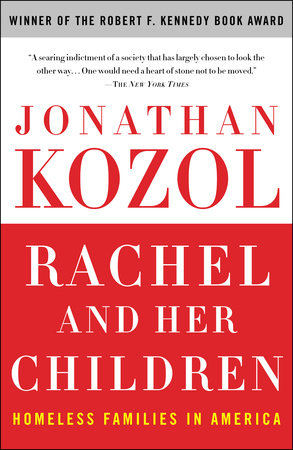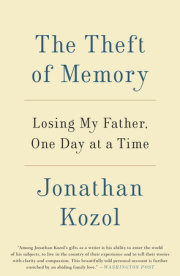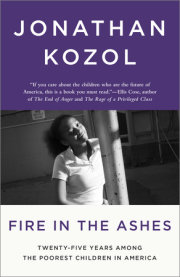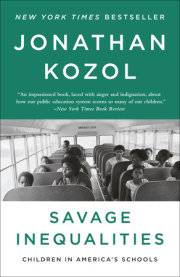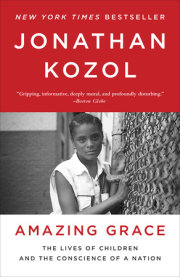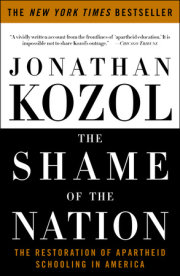Ordinary People He was a carpenter. She was a woman many people nowadays would call old-fashioned. She kept house and cared for their five children while he did construction work in New York City housing projects. Their home was an apartment in arrow of neat brick buildings. She was very pretty then, and even now, worn down by months of suffering, she has a lovely, wistful look. She wears blue jeans, a yellow jersey, and a bright red ribbon in her hair—“for luck,” she says. But luck has not been with this family for some time.
They were a happy and chaotic family then. He was proud of his acquired skills. “I did carpentry. I painted. I could do wallpapering. I earned a living. We spent Sundays walking with our children at the beach.” They lived near Coney Island. That is where this story will begin.
“We were at the boardwalk. We were up some. We had been at Nathan’s. We were eating hot dogs.”
He’s cheerful when he recollects that afternoon. The children have long, unruly hair. They range in age from two to ten. They crawl all over him—exuberant and wild.
Peter says that they were wearing summer clothes: “Shorts and sneakers. Everybody was in shorts.”
When they were told about the fire, they grabbed the children and ran home. Everything they owned had been destroyed.
“My grandmother’s china,” she says. “Everything.” She adds: “I had that book of gourmet cooking…”
What did the children lose?
“My doggy,” says one child. Her kitten, born three days before, had also died.
Peter has not had a real job since. “Not since the fire. I had tools. I can’t replace those tools. It took me years of work.” He explains he had accumulated tools for different jobs, one tool at a time. Each job would enable him to add another tool to his They had never turned to welfare in the twelve years since they’d met and married. A social worker helped to place them in a homeless shelter called the Martinique Hotel. When we meet, Peter is thirty. Megan is twenty-eight. They have been in this hotel two years.
She explains why they cannot get out: “Welfare tells you how much you can spend for an apartment. The limit for our family is $366. You’re from Boston. Try to find a place for seven people for $366 in New York City. You can’t do it. I’ve been looking for two years.”
The city pays $3,000 monthly for the two connected rooms in which they live. She shows me the bathroom. Crumbling walls. Broken tiles. The toilet doesn’t work. There is a pan to catch something that’s dripping from the plaster. The smell is overpowering.
“I don’t see any way out,” he says. “I want to go home. Where can I go?”
A year later I’m in New York. In front of a Park Avenue hotel. I’m facing two panhandlers. It takes a moment before I can recall their names.
They look quite different now. The panic I saw in them a year ago is gone. All five children have been taken from them. Having nothing left to lose has drained them of their desperation.
The children have been scattered—placed in various foster homes. “White children,” Peter says, “are in demand by the adoption agencies.”
Standing here before a beautiful hotel as evening settles in over New York, I’m reminded of the time before the fire when they had their children and she had her cookbooks and their children had a dog and cat. I remember the words that Peter used: “We were up some. We had been at Nathan’s.” Although I am not a New Yorker, I know by now what Nathan’s is: a glorified hot-dog stand. The other phrase has never left my mind.
Peter laughs. “Up some?”
The laughter stops. Beneath his street-wise manner he is not a hardened man at all. “It means,” he says, “that we were happy.”
By the time these words are printed there will be almost 500,000 homeless children in America. If all of them were gathered in one city, they would represent a larger population than that of Atlanta, Denver, or St. Louis. Because they are scattered in a thousand cities, they are easily unseen. And because so many die in infancy or lose the strength to struggle and prevail in early years, some will never live to tell their stories.
Not all homeless children will be lost to early death or taken from their parents by the state. Some of their parents will do better than Peter and Megan. Some will be able to keep their children, their stability, their sense of worth. Some will get back their vanished dreams. A few will find jobs again and some may even find a home they can afford. Many will not.
Why are so many people homeless in our nation? What has driven them to the streets? What hope have they to reconstruct their former lives?
Copyright © 1988 by Jonathan Kozol. All rights reserved. No part of this excerpt may be reproduced or reprinted without permission in writing from the publisher.

